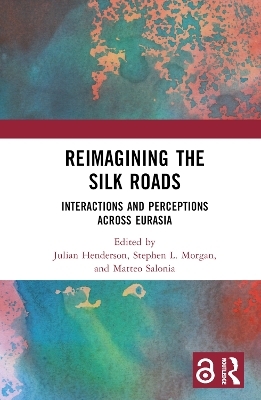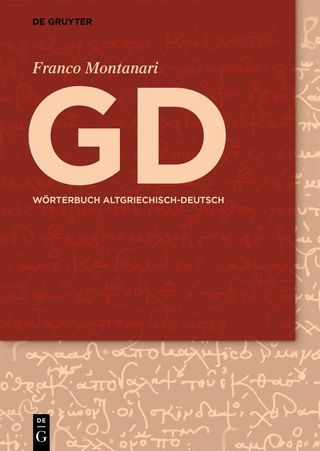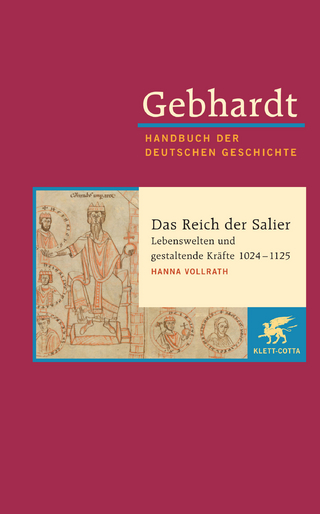
Reimagining the Silk Roads
Routledge (Verlag)
978-1-032-39131-1 (ISBN)
- Noch nicht erschienen (ca. Dezember 2024)
- Versandkostenfrei innerhalb Deutschlands
- Auch auf Rechnung
- Verfügbarkeit in der Filiale vor Ort prüfen
- Artikel merken
This book brings together scholars from many disciplines to shed light on the long history of the silk roads, to redefine it, and to demonstrate its vitality and importance.
Reimagining the Silk Roads illuminates economic, spiritual, and political networks, bridging different chronologies and geographies. Richly illustrated, it explores fascinating topics, including archaeological discoveries, oceanic explorations, the movement, and impact of ideas, and the ways in which the silk roads, broadly defined, contributed to processes of globalization. Reconciling the study of land and sea routes, and paying attention to themes such as material culture, environment, trade, and the role of religious faiths, the authors offer complex yet accessible studies of the history of interactions and perceptions across Eurasia over the last 3,000 years. The editors critically respond to the recent politicisation of the silk roads and reflect on their polycentric character.
The book challenges and revives silk roads studies, and it will be relevant not only to researchers in archaeology, history, heritage and related fields, but also to the general reader.
Julian Henderson is Professor of Archaeological Science at Nottingham University and Visiting Professor at the University of Nottingham Ningbo China. He has held senior management roles in Nottingham University, UK. He has published extensively on archaeological materials and increasingly on the archaeology of the silk roads. His primary collaborative research focus is silk roads archaeology and the application of science. He is Executive Director of the Global Institute of Silk Road Studies and Director of the Silk Road project. Stephen L. Morgan is Professor of Chinese Economic History (Emeritus) in the Nottingham University Business School and has held senior management roles at the UK and China campuses. His research focus is on the economic and business history of China, with teaching and other research on international business, strategic management, and economic development in Asia broadly. In an earlier career, he was a journalist and editor of newspapers and news magazines in Australia, Hong Kong, and China. Matteo Salonia holds a PhD in History from the University of Liverpool and is a Fellow of the Royal Historical Society. Currently, he teaches at the University of Nottingham Ningbo, where he also directs the Global Institute for Silk Roads Studies. His research interests include the economic and constitutional history of medieval Christendom, the Iberian contribution to early globalisation, and travel literature.
1. Reimagining the ‘silk roads’: An introduction; Part 1 - Environment; 2. Climates of the Silk Road through the Common Era; 3. Ecological Variability and Early Agriculture along the Proto-Silk Roads; 4. Diseases and the Medieval Silk Roads; Part 2 - Material Culture; 5. Roman Palmyra as a hub of trade and commerce: Material, epigraphic and numismatic evidence; 6. Abbasid Caliphate and Tang Dynasty in the ninth and tenth centuries: Trade, acculturation, and transformation; 7. Natron Glass and the silk roads in the first millennium BCE; 8. A ‘Lion’ on the Silk Road; Part 3 - Faiths and Social Groups; 9. Buddhist Missionaries at Medieval Chinese Courts: State Ideologists and Soul Savers; 10. The Sogdians, the ‘Cultural Bees’ of Eurasia; 11. Huns and Romans in the Fourth Century; 12. Christianity on the Silk Roads; 13. Dzhankent (Kazakhstan) – An early medieval trading node on the Northern Silk Road; 14. Replacing the Silk Road? Central Asian merchants between China and Scandinavia, 840–1000 CE; 15. Slavery and Human Trafficking along the Medieval Silk Roads, c. 800 to c.1350; Part 4 - Patterns of Eurasian trade;16. Mapping Knowledge about the Eurasian Silk Roads in the fifteenth century; 17. The Silk Road in Northeast Asia: Courtly Gift-giving, 668-1449; 18. Iberian Silk Roads: Spices, Silver and Souls; 19. Southeast Asia, China, and the ‘maritime silk roads’, c.900-1650;Part 5 - Historical Myths and Reconceptualisation; 20. The Birth of Silk Road Studies in China: Hedin, Andersson and Sino-Swedish Collaboration in Republican China; 21. The Belt and Road Initiative at Ten (2013-2023): A Crucial Juncture for China’s Infrastructure Geopolitics; 22. The Road Which Binds: The BRI, nationalism, and the securitization of Xinjiang; 23 Visualising the Silk Roads; 24. Conclusion: Questioning and Recovering the Silk Roads.
| Erscheint lt. Verlag | 11.12.2024 |
|---|---|
| Zusatzinfo | 7 Tables, black and white; 80 Halftones, black and white; 80 Illustrations, black and white |
| Verlagsort | London |
| Sprache | englisch |
| Maße | 156 x 234 mm |
| Themenwelt | Geisteswissenschaften ► Archäologie |
| Geschichte ► Allgemeine Geschichte ► Altertum / Antike | |
| Geschichte ► Allgemeine Geschichte ► Mittelalter | |
| ISBN-10 | 1-032-39131-6 / 1032391316 |
| ISBN-13 | 978-1-032-39131-1 / 9781032391311 |
| Zustand | Neuware |
| Haben Sie eine Frage zum Produkt? |
aus dem Bereich


